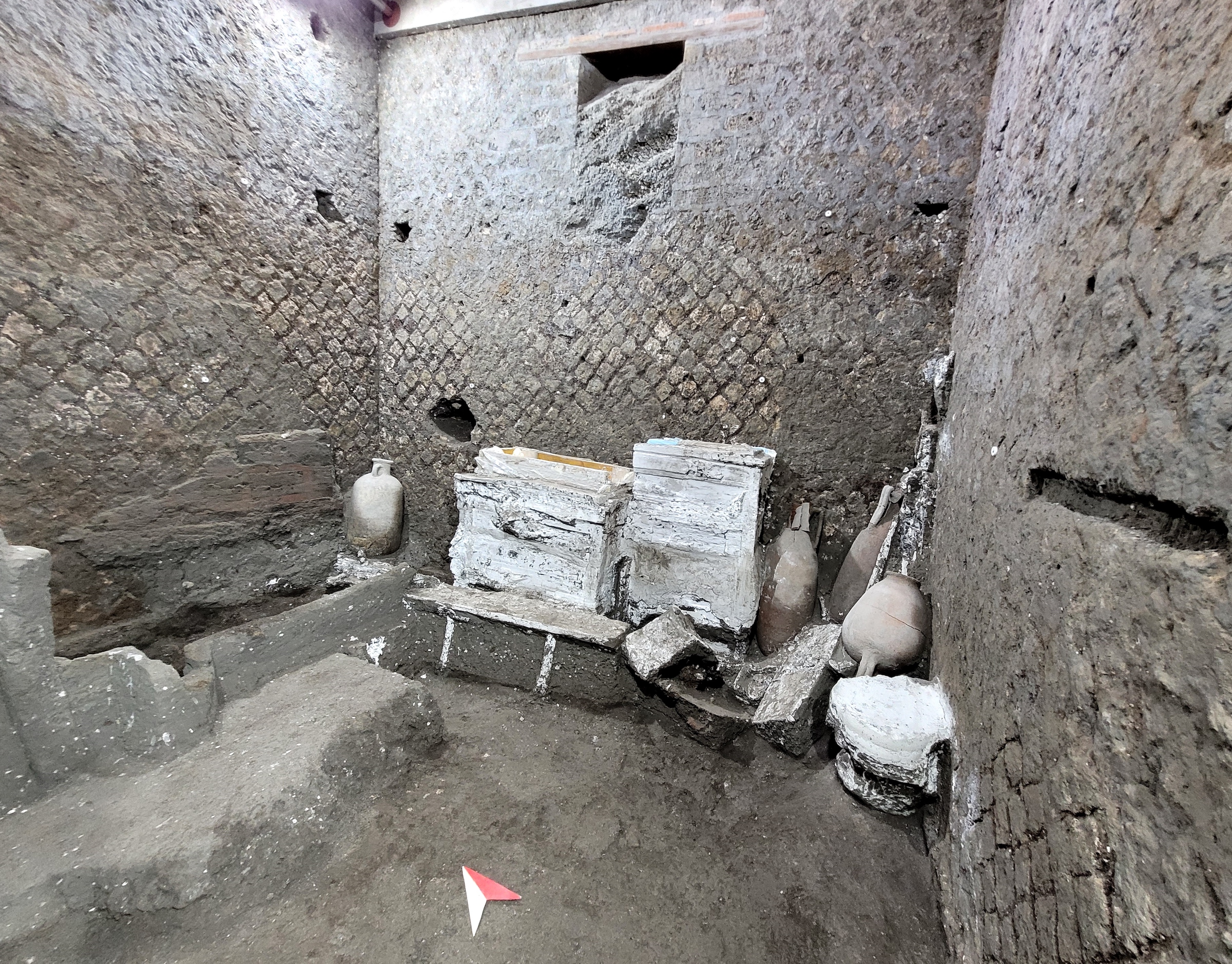Pompeii | Slavery in Ancient Rome
New Docuseries Digs Up Pompeii’s Lost Histories

This week, a compelling three-part limited series, Pompeii: The New Dig, premiered on PBS. Originally shot for the BBC, the docuseries follows a group of archaeologists, anthropologists, and volcanologists currently involved in the largest excavation at Pompeii in a generation. Cameras follow these experts as they uncover human remains, brush off new frescoes, hollow out ancient ovens, and work to piece together the vestiges of a town preserved in ashen amber from over 1,900 years ago.
Pompeii’s “new dig” is located within Region IX, Insula 10.
This was a wealthy quarter of the city, with archaeologists focusing on
a 3,000-square-meter area the size of a modern-day city block. In the
opening of the first episode, viewers are told a stunning fact about the
famous site: a full one-third of the 66-hectare city (about 163 acres)
has yet to be uncovered.
👇
New Pompeii Discovery Sheds Light on Slavery in Ancient Rome
8/23/2023
Earlier this week, archaeologists in Pompeii announced the recent discovery of furniture and other objects in a room that may have belonged to enslaved people in the Ancient Roman villa of Civita Giuliana. Published in a report co-authored by the archaeological park’s director Gabriel Zuchtriegel and fellow researcher Chiara A. Corbino, the new finds give more detailed insight into the lives and social hierarchy of enslaved Roman individuals prior to the volcanic eruption of Mount Vesuvius that decimated Pompeii in 79 CE.
The enslaved community of the Roman Empire is largely omitted from any written records, and what is known is “almost exclusively from an elite perspective,” per a statement from the Archaeological Park of Pompeii. In recent weeks, researchers uncovered a previously unknown bedroom (known as “Room A”) likely inhabited by enslaved people working in the villa, located approximately a quarter mile north of Pompeii. Using a unique plaster cast technique, researchers were able to reconstruct furniture in the room, including a pair of beds, two cupboards, some ceramic containers, and a series of tools, among them an iron blade from a gardening hoe.

The researchers pointed out notable differences between the two beds they found in Room A, as only one had a mattress, making it “a more comfortable and expensive type.”
“What has now emerged suggests a definite hierarchy within the servants’ quarters,” the park’s archaeological team wrote in a press release. The terms “servants” and “slaves” are used interchangeably to describe the enslaved Roman residents of the Pompeii villa.
In their report, the archaeologists also noted evidence of rodent remains in a different and previously excavated room that was first unearthed in 2021. Below one of the three beds in the room, researchers uncovered the skeletal remains of two mice in a ceramic vessel, as well as a black rat in a clay jug — “details that once again underscore the precarious and unhygienic conditions” the enslaved Roman people endured during the ancient empire.

“What emerges here is the social structure of servitude that was meant to prevent escapes and forms of resistance, not least because traces of window grilles, padlock, and shackles are missing,” Zuchtriegel said in a press statement. “It seems that control was mainly through the internal organization of the servants, and not through physical barriers and constraints.”
Many of the elements found during the dig were replicated using a plaster-cast method developed by Giuseppe Fiorelli in 1863, when he discovered that decomposed organic materials buried by volcanic debris had left behind imprinted molds. When Fiorelli filled the molds with plaster, he reconstructed the original bodily silhouettes of the victims who perished in the historic Pompeii explosion. Archaeologists used this same technique during their recent excavation of the Civita Giuliana in order to replicate the outlines of furniture, human bodies, and other elements in the villa.





Comments
Post a Comment
leave a message please